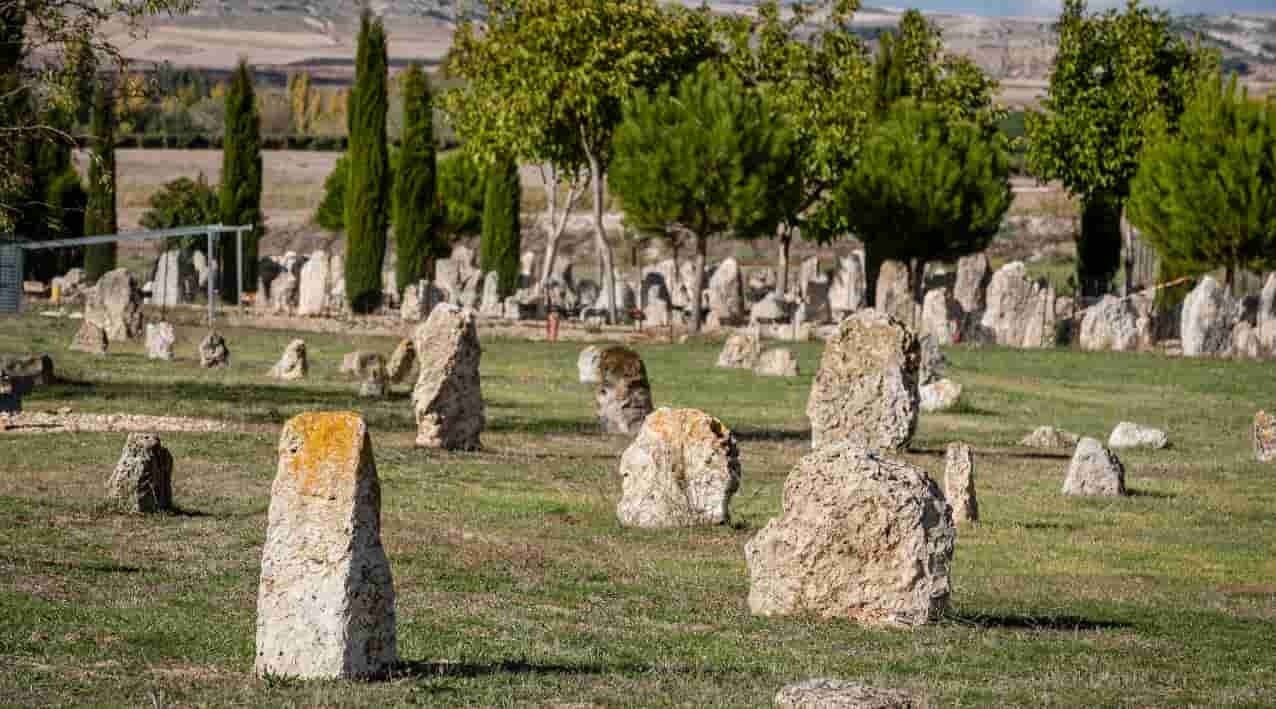The town of Pesquera de Duero has a past full of history and is also the municipality where the best wine in Ribera del Duero is harvested. The historian Juan Ortega Rubio already said it in his book “The towns of the province of Valladolid” published in 1895.
Just 15 minutes from Pesquera de Duero is Pintia, an ancestral city, an archaeological treasure that stands as a silent witness to a fascinating history that unfolds over millennia. On the banks of the Duero River, the Pintia Archaeological Zone is a treasure that protects the vestiges of Vaccean, Roman and Visigothic cultures.
The Pintia Archaeological Zone displays its heritage wealth in 125 hectares, covering an area between Padilla de Duero, Peñafiel and Pesquera de Duero, embraced by the waters of the Duero River.
Pintia, recognized as an Asset of Cultural Interest since December 9, 1993, is a living testimony of an ancient and tumultuous history, marked by three important cultural periods: the Vaccean, the Roman and the Visigoth. However, it is the pre-Roman period, between the 4th centuries BC. C. and the change of Era, the most relevant in the history of Pintia.
The visibility of the archaeological remains is still limited, although in recent years various environmental restoration efforts and excavations have been undertaken that have allowed us to understand this historical complex, mainly thanks to guided tours carried out by CEVFW archaeologists.
Within the Pintian complex, several important functional areas are distinguished. Among them, the settlement of Las Quintanas, the necropolis of Las Ruedas, the ustrinum or cremation site of Los Cenizales and a possible sanctuary between Los Hoyos and Las Ruedas stand out. And in the Pesquera de Duero area, the artisanal neighborhood of Carralaceña with its residential area, the corresponding necropolis and various local pottery production centers.
From Pesquera de Duero it is a walk that can be done by bicycle, hiking or by car. In every corner of Pintia, from the settlement of Las Quintanas to the artisanal neighborhood of Carralaceña, the threads of an ancient society full of life are interwoven, now preserved in the archaeological remains that awaken the imagination and interest of those who seek to unravel the mysteries of times past.
Exploring the towns of the Ribera del Duero is highly recommended, offering a unique and enriching experience. An area that treasures a rich history, highlighting its valuable cultural heritage, an exquisite gastronomic offer and its deep-rooted wine tradition, such as that of Bodegas Federico in Pesquera de Duero. A visit to this area and a stop to stock up on the good Tinto Federico wines will always be a visit to remember.


